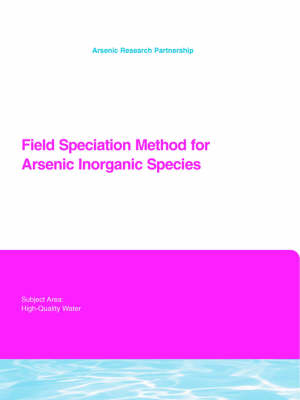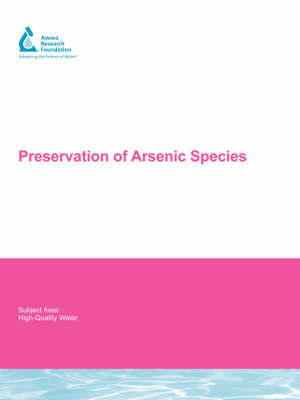Water Research Foundation Report
2 total works
Field Speciation Method for Arsenic Inorganic Species
by Dennis A. Clifford, Saqib Karori, Ganesh Ghurye, and Gautam Samanta
Published 31 March 2005
Inorganic arsenic (As) in drinking water is considered a human carcinogen with multiple sites of attack. There are numerous reports in the literature, based on past and ongoing experience in various countries in Asia and South America concerning the higher risks of skin, bladder, lung, liver, and kidney cancer that result from continued consumption of elevated levels of arsenic in drinking water. In ground waters, only inorganic arsenic in the form of arsenite [As III] and arsenate [As V] are significant. As III is much more toxic than As V. Moreover, due to the anionic character of As V in the drinking water, As V can be removed more easily than As III. Arsenic speciation of water samples changes over time, specifically, during transportation of samples to the laboratory and storage of samples for analysis due to redox reactions and photochemical oxidation. But, it is important to know the exact concentrations of the arsenic species in the drinking water at the source in order to develop proper treatment strategies, and for epidemiological studies. Therefore, arsenic-containing waters must be speciated immediately in the field or preserved for later speciation in the laboratory. Currently, there is no generally accepted (standard) method for field speciation or for preservation. This study describes the development of a reliable field-speciation method for inorganic arsenic species, and compares the new method with a recently developed USEPA preservation method.Originally published by AwwaRF for its subscribers in 2004. This publication can also be purchased and downloaded via Pay Per View on Water Intelligence Online - click on the Pay Per View icon below
In order to establish effective treatment removal strategies for arsenic, it is important to know the actual concentrations of As(III) and As(V) in drinking waters. Due to its anionic character, As(V) can be removed more easily than As(III). The distribution of As(III) and As(V) species depends greatly on the abundance of redox-active solids, especially organic carbon, the activity of microorganisms, and the extent of diffusion of O2 from the atmosphere. In strongly reducing aquifers, As(III) is the dominant species based on the thermodynamic considerations, whereas As(V) is the more stable oxidation state under oxic conditions or in oxygenated waters.
Based on extensive experimental results in Fe(II)-contaminated challenge water, it was found that EDTA-HAc could be used to preserve the arsenic species for at least 28 days in opaque plastic bottles. Although the alternative preservatives, H2SO4 and H3PO4, successfully preserved the original As(III)/(V) speciation under some conditions, these preservatives were generally unsuccessful for the desired 28-day period under reducing and oxidizing conditions in the sample pH range of 6.5?V8.4 and in the presence of 3 mg/L Fe(II). A comprehensive, systematic study was conducted to determine the effect of ferrous iron on the stability of arsenic species. Among the promising preservatives described in the literature, H2SO4, H3PO4, EDTA, and EDTA-HAc were chosen for this study.
The combined results of two AwwaRF arsenic analysis projects 'Field Speciation Method for Arsenic Inorganic Species' and this project, Preservation of Arsenic Species have yielded a method for immediate field-speciation and a preservation technique for speciation within 30 days of sampling. Limited field verifications of these methods, which give statistically indistinguishable results, have been completed.
Based on extensive experimental results in Fe(II)-contaminated challenge water, it was found that EDTA-HAc could be used to preserve the arsenic species for at least 28 days in opaque plastic bottles. Although the alternative preservatives, H2SO4 and H3PO4, successfully preserved the original As(III)/(V) speciation under some conditions, these preservatives were generally unsuccessful for the desired 28-day period under reducing and oxidizing conditions in the sample pH range of 6.5?V8.4 and in the presence of 3 mg/L Fe(II). A comprehensive, systematic study was conducted to determine the effect of ferrous iron on the stability of arsenic species. Among the promising preservatives described in the literature, H2SO4, H3PO4, EDTA, and EDTA-HAc were chosen for this study.
The combined results of two AwwaRF arsenic analysis projects 'Field Speciation Method for Arsenic Inorganic Species' and this project, Preservation of Arsenic Species have yielded a method for immediate field-speciation and a preservation technique for speciation within 30 days of sampling. Limited field verifications of these methods, which give statistically indistinguishable results, have been completed.

